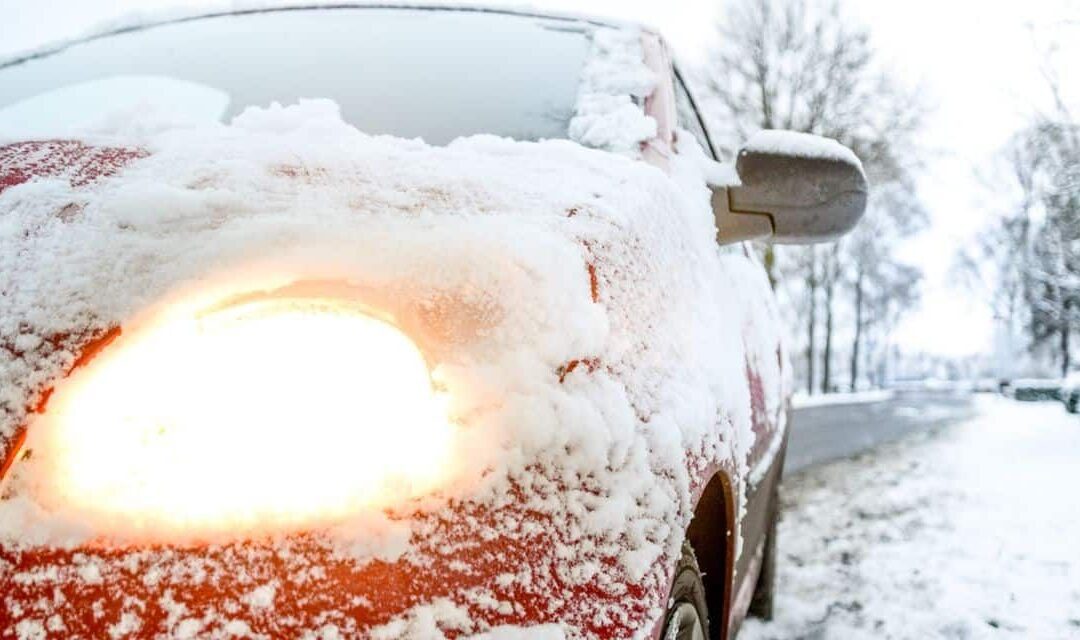It’s easy to overlooked fogged headlights in the bright sunshine of summer driving. Now that hours of sunlight are dwindling in Madison WI cloudy, yellowed headlight covers are putting drivers at risk. Wintertime driving has plenty of risk without adding poor visibility from clouded headlights. You owe it to yourself, family and other drivers to do whatever you can to be as safe as possible, don’t you?
A studies done by Forbes Magazine and AAA revealed clouded headlight covers reduce the intensity of low-beams by as much as 22 percent. And, overtime the plastics used to cover headlights deteriorates – cracks form along with the discoloration. The plastic covering, when exposed to long periods of sunlight, ages and weakens. Add the corrosives used in winter to melt ice and the damage progresses even faster. Deterioration can appear as soon as within three years of a vehicle rolling off the dealers’ lot. Most likely in Wisconsin, it shows up within three to five years.
Night time visibility can is bad enough in winter without any added filtering of the light. Now’s the time to check your headlights and get fogged lenses fixed or replaced.
What Causes Fogged Headlights

Swirling wind, wet snow and traffic all team up to make winter driving difficult enough without poor lighting from fogged headlights
The older a vehicle gets the more likely they are to be plagued by hazy headlights. And, discolored headlight lenses are not just a problem in lower-priced older vehicles, it happens to newer luxury rides, too.
What leads to discoloring? Age is a factor, of course. But a significant factor is our environment. Weather and road conditions take a toll on headlights, especially the polycarbonate protective lenses. There’s no one element that causes discoloring, but the major contributors are:
- Oxidation – headlight lenses come with manufacturer-applied topcoat to protect them as long as possible. Over time the top layer wears away exposing the acrylic lens to air and corrosives. The UV (ultra violet) rays of the sun change the chemistry of the plastic, changing its color –to yellow, gray or a yellowish brown.
- Damage – headlights are in the path of any airborne debris, thus damage from rocks, cement chips and other flying objects is common. Even little nicks, chips and dents in the plastic open the once smooth surface to further damage.
- Chemicals – wet roads, especially in winter, coat the headlights with mud and a dirty film. Salt and road chemicals create an opaque layer that reduces the light passing through the lens. On a damaged surface the chemicals combine with the plastic forming a permanent layer resulting in fogged headlights.
- Condensation – water vapor inside the headlight condenses and forms a film. When the outer seal of the headlight breaks and moisture enters, water inside the lens scatters the light from the bulbs and reduces illumination. Headlight restoration is the ultimate solution.
The best prevention for fogged headlights is routine maintenance. Keep lenses clean inside and out. Unfortunately, the plastic will begin to deteriorate as it ages and there’s little or nothing you can do about it.
Headlight Restoration Options
This time of year the most likely cause for lowered illumination dirty, slushy road film splashed up from melting ice and snow. When you notice you “can’t see” because your headlights aren’t doing their job the obvious action is: clean them! How many times have you seen cars driving around Madison with headlights covered over with snow or ice? It’s simple enough to brush it off isn’t it? Whenever you set out to clean off your car in winter, be sure to dust of head and tail lights. And, when you’re cleaning the windows at the gas station, swipe the headlights and taillights, then, too.
A good car wash on a regular basis removes dirt, salt and chemicals. A car wash is a start. But, nicked or oxidized lenses don’t benefit from a car wash because a plain wash doesn’t get to the root of the problem.
Can you solve the problem yourself? There are do-it-yourself headlight cleaning suggestions. Some work. Some don’t. Few last. Among DIY options are:
- Toothpaste and car wax – applying toothpaste to the discolored lenses does work. Follow up with a coat of good car wax. This “fix” only lasts a couple months at best.
- Sandpaper – apply fine sandpaper to the nicked and pock-marked surfaces. The process smooths out the minor cracks and chips that diffuse the light. You’ll have to add a couple layers of clearcoat to protect the surface when you’re done.
There are, no doubt, others you’ll find on the Internet. Some will work, some won’t and few last. More importantly, none come with a guarantee – unlike the solutions provided by AutoColor that come with a guarantee on our products and our professional workmanship.
Improve Wintertime Visibility

Unobstructed vision in winter is a key to safe driving. Keeping headlights clean – inside and out – is a timely investment in personal safety
Cleaning up fogged headlights is only one aspect of improving your wintertime visibility. Wisconsin weather makes it hard enough to see with its fog, sleet, freezing rain and wind-blown snow. Keeping your vehicle clean and well-maintained is the only way to combat this annual onslaught. There are three often-overlooked elements that give you an edge on good wintertime visibility:
- Headlights and taillights – keeping headlights and tail lights clean and bright is a critical task. Just like pilots preparing for a flight, drivers should do a “pre-flight” check on their vehicles to make sure head and tail lights – and turn signal lights – are clean and easy to see. Consider, if you are having trouble seeing, people are probably having trouble seeing you, too. In newer models, don’t forget to regularly clean the lens on your backup camera!
- Wiper Blades – even in daylight, rain or snow restricts your vision when you need your wipers. Brittle, damaged or frozen blades add to the risk of bad weather driving. Inspect your wiper blades regularly and replace them when performance decreases – if your vehicle is stored outdoors the rubber on the wipers is also impacted by UV and other environmental factors more than ever. With so many Sport Utility Vehicles on the road, don’t forget to check the wiper blade on the rear window, too.
- Washer Fluid – hand-in-hand with high-quality wipers, make sure you have enough windshield washer fluid (and free of glass chips). And make sure it’s the right kind – it is rated for the temperatures of the season. Before the ice, snow and slush builds up, make sure the system is working properly as well – regularly check nozzles to keep them free of debris, ice and snow.
Call A Pro For Fogged Headlight Restoration
Are you tempted by DIY options as a quick fix when you’re plagued by fogged headlight lenses? If you are, think it over. Is having the work done by a team of professionals you trust and one that stands behind it’s workmanship worth it? AutoColor provides a wide range of services to care for and repair your vehicles.
Call AutoColor or stop into one of our local auto body shops: on Madison’s West Side in Middleton on Parmenter Road; on Madison’s East Side on Stoughton Road near Buckeye Road to schedule an appointment. Make AutoColor your choice for professional auto body repairs and for honest evaluations of all your repair options. Put our skilled, trained professionals to work on your car, truck or SUV and get your fogged headlights shined up for winter driving in the Madison WI area.






